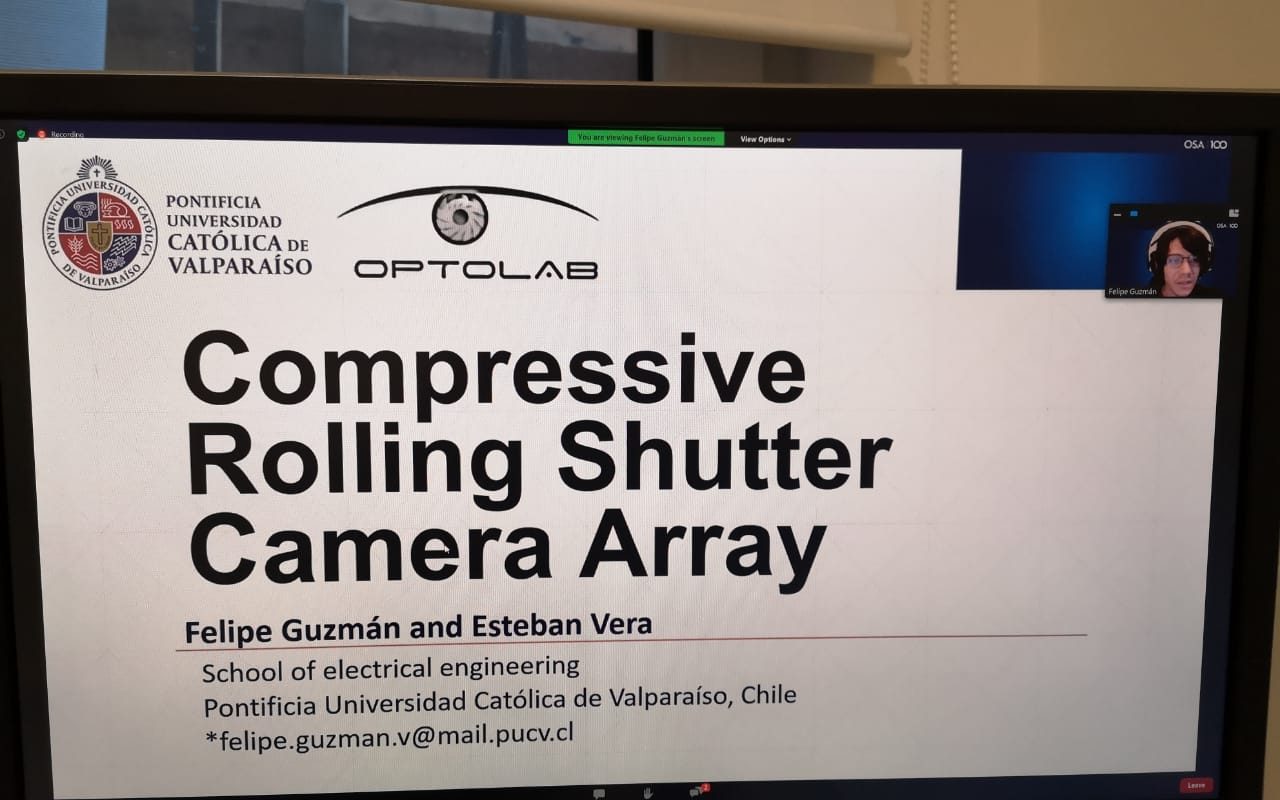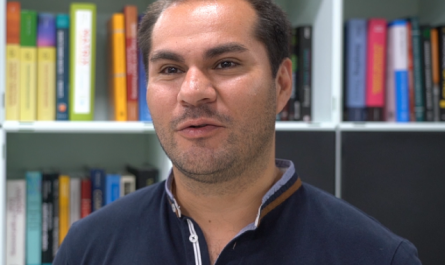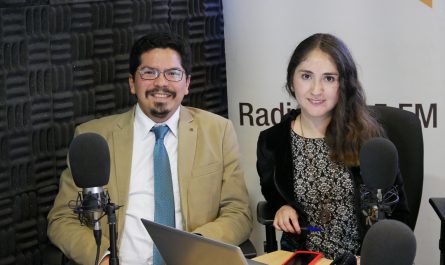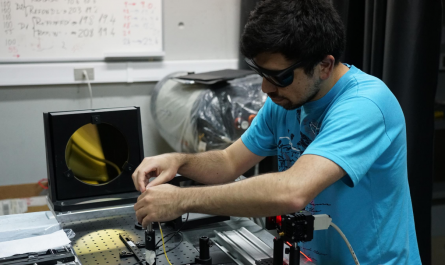Felipe Guzmán, Electronic Civil Engineer and student of the Master’s program in Engineering Sciences, en Ciencias, mention in Electrical Engineering of the School of Electrical Engineering (SEE) of the Pontificia Universidad Católica de Valparaíso (PUCV), presented a progress of his work as a laboratory assistant of the optoelectronics School at the Optical Society of America’s (OSA) Applied Optics and Imaging congress, held online June 22-26, 2020.
The work in question corresponds to Compressive Rolling Shutter Array, simulations that Guzmán has been carrying out in the framework of his master’s thesis, and which consists of an arrangement of four cameras that, using the same sensor, can make a video recovery, which he presented on the June 24.
The compressive sensing
“There are many ways to make images and how to make then in a better way. One of them is through compressive sensing”, commented Guzmán.
According to the compression theory, it is postulated that the signals that come from nature are compressible, that they can be represented with less amount of information and they can be measurable. A more common example of this we see it in the transformation of an image to .JPG format, which, while compressing the image, generates artifacts that reduce the quality.
The compressive sensing goes further, searching to measure the already compressed signal. This change allows us to try to see how to decompress knowing how the object is already compressed. The advantages and applications of itself, can be applied in many types of cameras, in areas such as astronomy or biotechnology, for example.
Guzmán hopes to complete the work from here to September, with the experimental results done, so he can be able to present it and apply for the master’s degree. In addition, he concluded by expressing his interest in studying the recently opened PhD. program in Electrical Engineering of the SEE.





